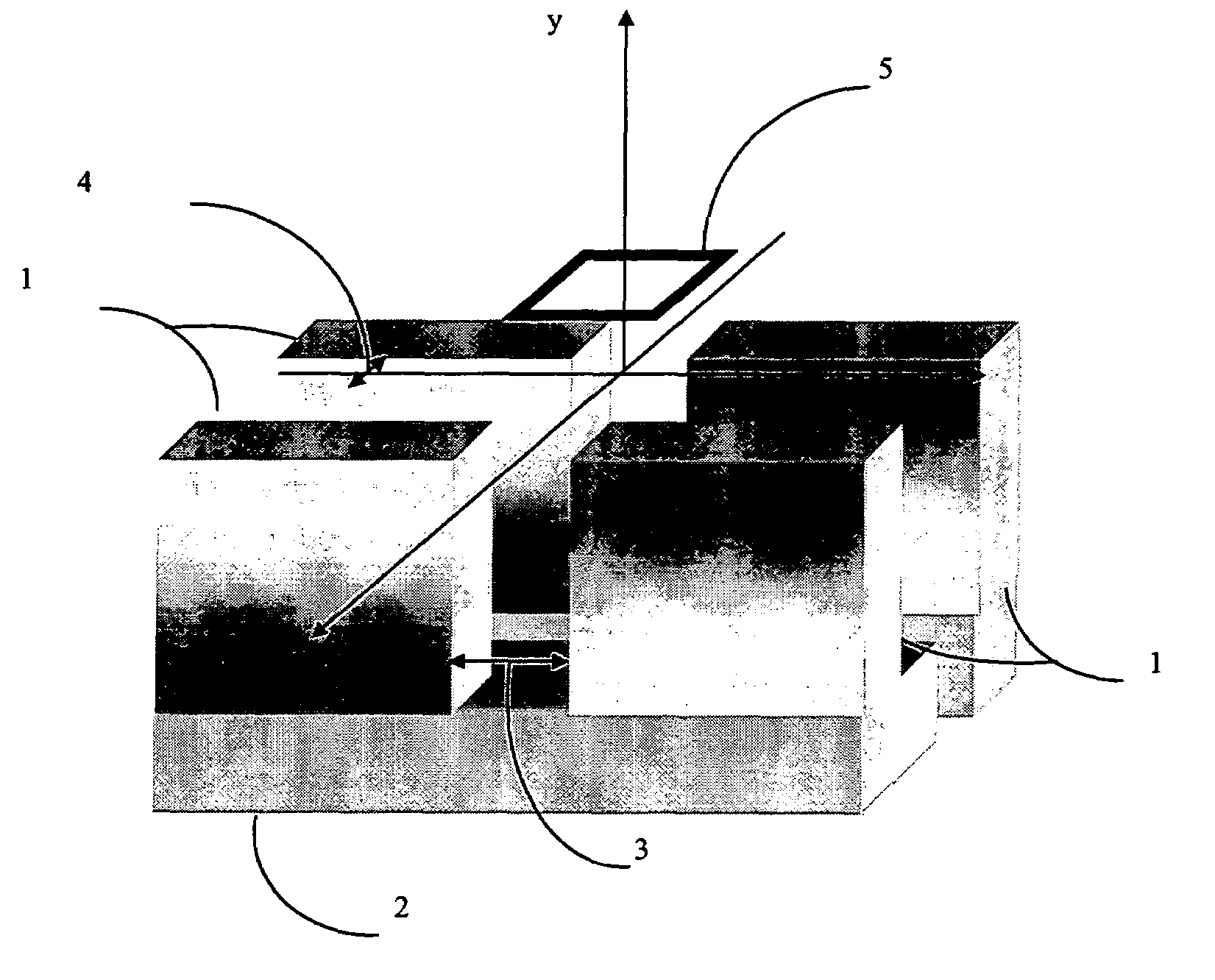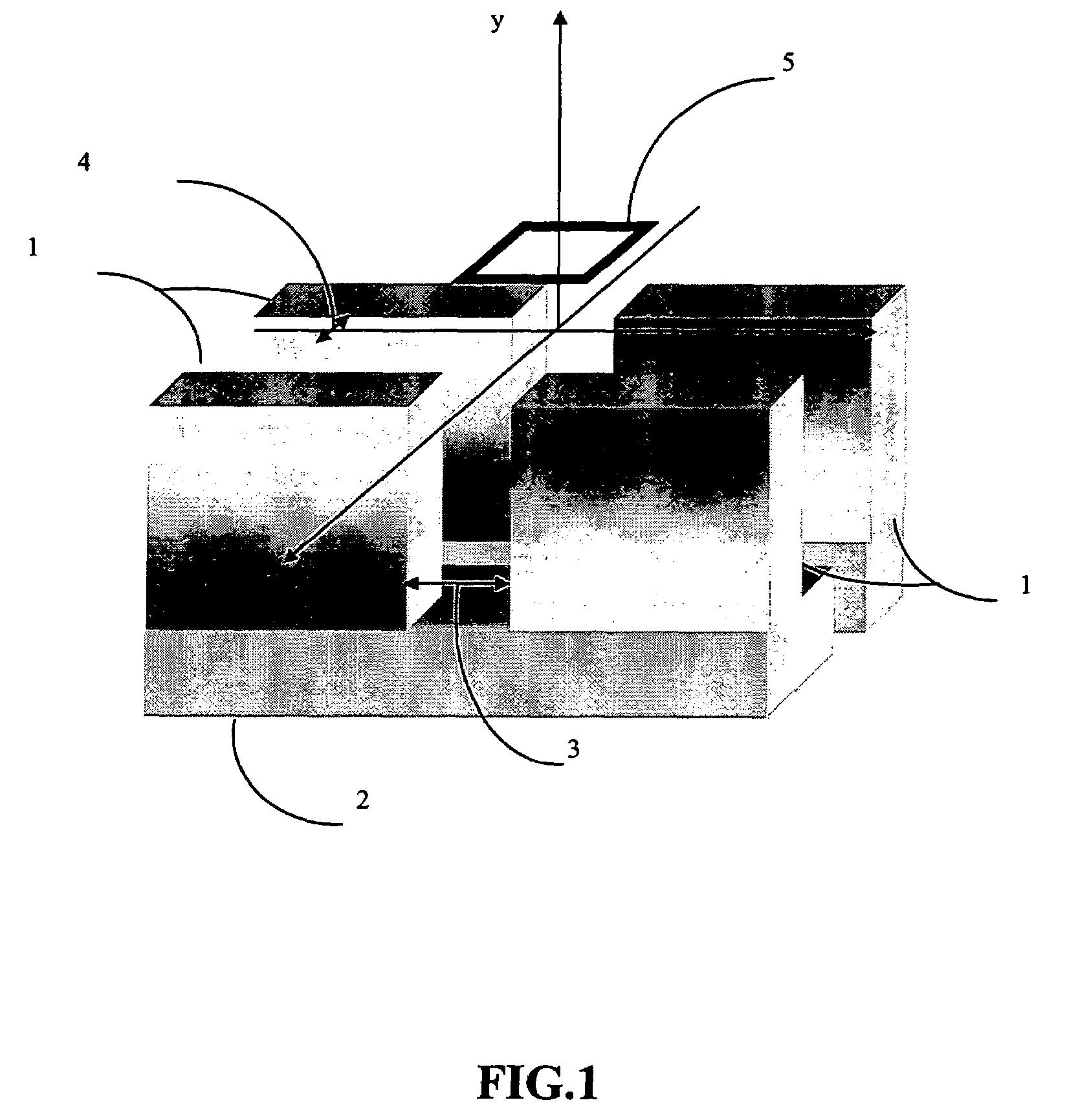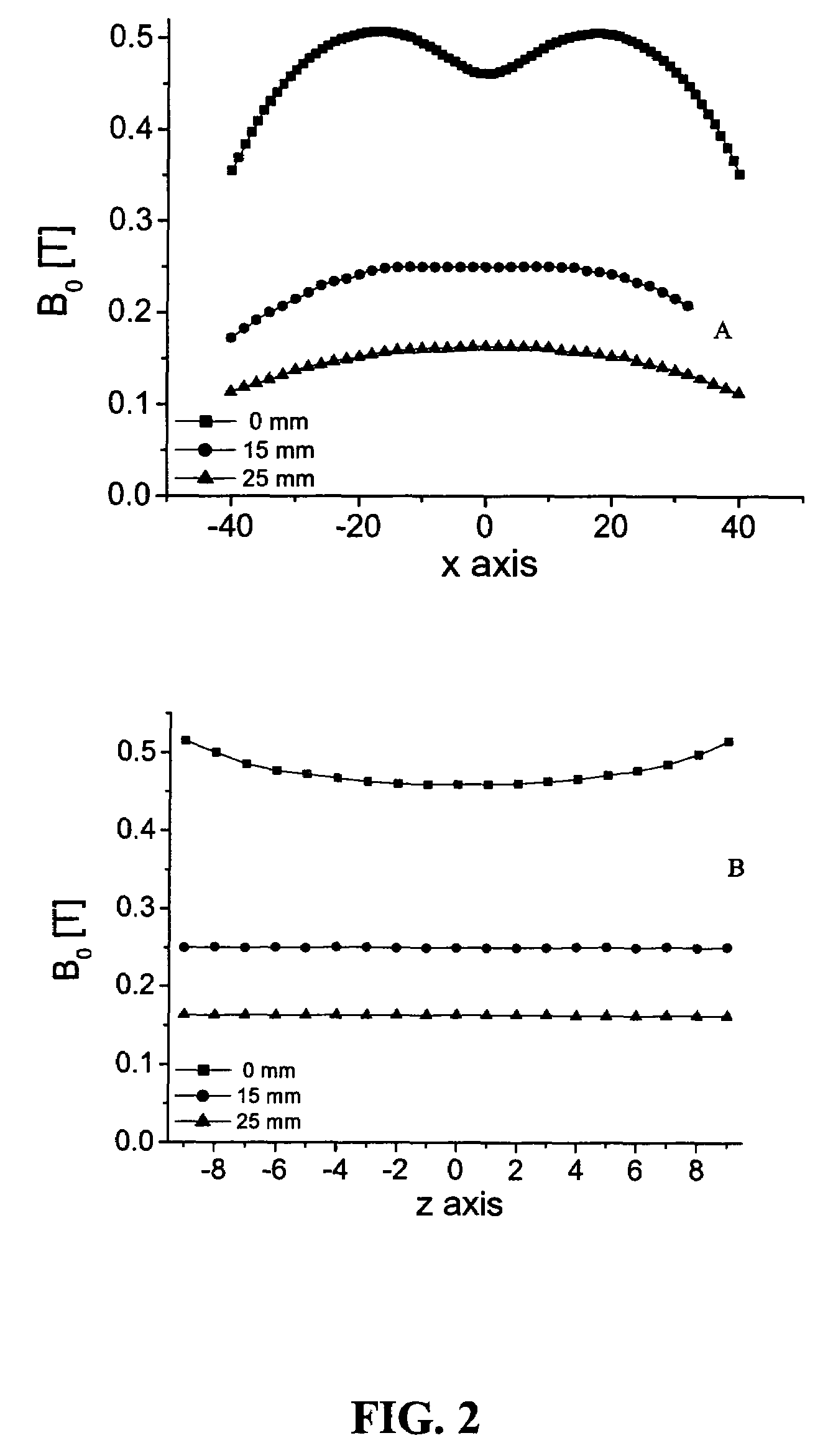Single-sided NMR sensor with microscopic depth resolution
a single-sided, depth resolution technology, applied in the field of single-sided magnetic resonance imaging (mri) sensors, can solve the problems of poor depth resolution reported with single-sided sensors, complicated and expensive magnet geometries, and poor spatial resolution, so as to improve the flatness of the defined sensitive region, improve the flatness of the constant field slice, and improve the effect of magnetic field distribution
- Summary
- Abstract
- Description
- Claims
- Application Information
AI Technical Summary
Benefits of technology
Problems solved by technology
Method used
Image
Examples
Embodiment Construction
[0020]Turning to FIG. 1, the construction of a sensor prototype is presented. The magnets 1 are neodymium-iron-boron (NeFeB) blocks of 40, 50, and 45 mm along x, y and z, the gaps 3 and 4 are Gb=19 mm and Gs=4 mm respectively, and the iron yoke 2 is 20 mm thick. The magnetic field was measured using a Lakeshore Hall probe, and its spatial dependence along the two lateral directions is shown at three different depths in FIG. 2. While the behavior of the field along z is quadratic at the surface and become flat for larger depths, the field along x becomes flat at a depth of 15 mm away from the magnet, a distance that depends on the Gs chosen. The magnetic field at 15 mm from the surface and in the center of the device has a value of about 0.25 T along z, and has a strong uniform gradient of 11.2 T / m along the depth direction. At this depth, the device defines a plane of constant field intensity parallel to the surface with a field variation smaller than 0.1 mT in a region of 20 mm alo...
PUM
 Login to View More
Login to View More Abstract
Description
Claims
Application Information
 Login to View More
Login to View More - R&D
- Intellectual Property
- Life Sciences
- Materials
- Tech Scout
- Unparalleled Data Quality
- Higher Quality Content
- 60% Fewer Hallucinations
Browse by: Latest US Patents, China's latest patents, Technical Efficacy Thesaurus, Application Domain, Technology Topic, Popular Technical Reports.
© 2025 PatSnap. All rights reserved.Legal|Privacy policy|Modern Slavery Act Transparency Statement|Sitemap|About US| Contact US: help@patsnap.com



